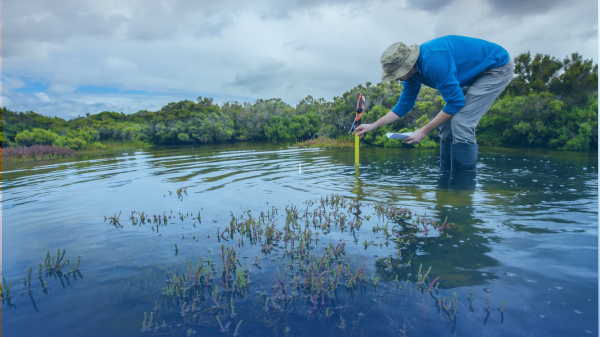To guarantee a sustainable future, you can adopt various water reserve conservation strategies. First, consider employing smart irrigation systems that adjust water use based on real-time environmental data. You’ll also benefit from installing rainwater harvesting systems to reduce dependence on municipal supplies.
Engaging in community education about water-saving techniques further amplifies the impact of individual actions. Additionally, support policies that incentivize the adoption of water-efficient appliances and practices. By implementing these technologies and advocating for supportive policy measures, you’re contributing greatly to water sustainability. Exploring further, you might uncover even more innovative solutions that safeguard water reserves for future generations.
Key Takeaways
- Implement smart irrigation systems to optimize water use in agriculture based on real-time environmental data.
- Encourage the adoption of rainwater harvesting systems to supplement water supply and reduce municipal dependency.
- Expand water recycling programs to transform wastewater into a viable resource for various uses.
- Promote community-based conservation education and workshops to enhance water literacy and sustainable practices.
- Develop and enforce regulatory frameworks that support sustainable water management and technology implementation.
Understanding Global Water Challenges
Water scarcity affects more than 2 billion people worldwide, highlighting the urgent need for thorough understanding and proactive management.
Let’s plunge into the pool—figuratively, of course, since water’s running low—of factors intensifying this crisis. You’ve got climate impact playing its tricks, changing rainfall patterns, and cooking up more droughts than a bad barbecue.
Then there’s population growth, multiplying faster than rabbits, which means more mouths to water. Don’t forget the pollution sources. It’s not just factories belching chemicals into rivers; it’s also less obvious culprits like pharmaceuticals turning waterways into bizarre chemical cocktails.
Agricultural demands are another thirsty contender, guzzling more water than a marathon runner, all while groundwater depletion continues unchecked like a teenager raiding a fridge. Urbanization effects aren’t helping either, with more concrete and less permeable surfaces, rain can’t even soak into the earth—it’s like trying to squeeze into jeans from your high school days.
Finally, ecosystem health is waving red flags, begging us to notice that without healthy rivers, lakes, and wetlands, the environmental domino effect could leave us high and dry—literally.
Technological Innovations in Conservation
Amid the complexities of global water scarcity, cutting-edge technological innovations are paving the way for more effective conservation strategies.
You’re living in a world where your morning coffee relies on the brains of smart irrigation systems to water the beans efficiently. By also using rainwater harvesting, you can greatly lower your overall water usage and contribute to freshwater conservation. This method not only provides an alternative source for irrigation but also reduces your dependence on traditional water sources.
These systems utilize sensors and data analytics to optimize water use, ensuring every drop counts and your coffee tastes guilt-free. Here’s a snapshot of what’s making waves in water conservation:
- Smart Irrigation Systems: These aren’t your grandma’s sprinklers. Equipped with weather forecasting and soil moisture sensors, they water crops only when needed.
- Desalination Technologies: Turning ocean water into your next glass of water without the salty aftertaste.
- Rainwater Harvesting: Because every cloud has a silver lining that can be captured and reused.
- Water Recycling: What was once waste is now a resource, redefining the phrase “one man’s trash is another man’s treasure.”
- AI in Water Management: AI algorithms predict usage patterns and leaks, making conservation look like a piece from a sci-fi novel.
As you dive deeper into these technologies, remember, every drop saved is a victory dance for the planet.
| # | Preview | Product | Rating | Price | |
|---|---|---|---|---|---|
| 1 |

|
Water Desalination Technologies: Desalination Technologies |
$56.00 |
Buy on Amazon | |
| 2 |

|
Advanced Water Treatment and Desalination Technologies |
$9.64 |
Buy on Amazon |
Policy Measures and Regulatory Frameworks
Building on the foundation set by technological advancements in water reserve conservation, it’s important to examine the role of policy measures and regulatory frameworks that support these efforts. You see, without a sturdy set of rules, all those fancy tech solutions are just drops in the bucket. One of such measures is rainwater harvesting, a system that not only reduces reliance on municipal sources but also contributes to saving cost and water conservation.
Now, let’s plunge into the deep end with water pricing and conservation incentives.
First off, water pricing isn’t just pulling numbers out of thin air. It’s a calculated method to make you (yes, you!) think twice before you turn that tap into a mini Niagara Falls. By adjusting the cost of water usage, governments can gently nudge households and businesses to use less. This, in turn, helps relieve strain on municipal water systems and promotes a more resilient and secure water future.
Think of it as your utility bill wagging a finger at you saying, “Let’s not go water-wild today, okay?”
Next up, conservation incentives. These are the carrots to the stick of water pricing. Local governments often offer rebates for water-efficient appliances or rainwater collection systems. It’s like getting a gold star in class but instead, you get cash back for not drowning your garden during a downpour.
Together, these policies form a dynamic duo, guiding and encouraging everyone to play a part in water reserve conservation. So, let’s tighten those taps and save some drops, shall we?
Community Engagement and Education
Shifting focus from policy to grassroots initiatives, community engagement and education emerge as essential elements in the quest for sustainable water use.
You’re not just a bystander in this narrative; you’re a key player in the water saga. Immerse yourself in the dynamic world of local initiatives where every drop counts and your actions can ripple through the community.
Here’s how you can make waves:
- Water Literacy Programs: Understand the ABCs of water usage. Knowledge is power, and in this case, it’s also conservation. Get to know your H2O!
- Conservation Workshops: Roll up your sleeves and get involved. These aren’t just talk shops; they’re do-shops where you learn water-saving techniques that can be applied at home and beyond.
- Youth Involvement: Engage the young minds who are the future custodians of our water reserves. Schools and clubs can be hotbeds for innovative water conservation strategies.
- Grassroots Movements: Join forces with neighbors and friends to advocate for sustainable practices within your community. There’s strength in numbers!
- Community Partnerships: Team up with local businesses and government bodies to pool resources and ideas for a more impactful approach.
Case Studies of Successful Conservation
Why do some community-led water reserve conservation initiatives succeed where others falter? Well, it’s not just about having water; it’s about handling it with a mix of smarts and humor.
Embracing the principles of sustainable development, the town of Aquaville set a great example. The residents turned urban water management into a competitive sport and reduced their water usage by 30% simply by seeing who could shower the fastest (no peeping, just timing!).
Moving over to the agricultural sector, let’s visit Farmsville. Here, farmers adopted new agricultural practices with a twist—they implemented a “dance for rainwater harvesting” routine.
Envision this: a synchronized routine where each movement aids in the collection and distribution of rainwater. Not only did their crops thrive, but they also went viral on social media!
On the industrial front, companies in Industriopolis, leveraging green energy technologies, achieved a 25% increase in industrial efficiency by installing systems that treat and recycle water—apparently, machines love a good spa day too.
Lastly, the community of Greentown focused on ecosystem preservation and groundwater management. They created ‘Guardians of the Aquifer’ clubs, where members keep an eye on local water sources while wearing superhero capes. It’s effective and fashion-forward!
Together, these examples show that with creativity and community spirit, water conservation isn’t just crucial—it’s achievable and fun.
Frequently Asked Questions
How Does Water Conservation Impact Personal Daily Water Usage?
When you focus on water reserve conservation, it directly tweaks your daily habits. You’ll start turning off the tap while brushing your teeth and maybe even opt for shorter showers. These small changes, driven by your growing conservation awareness, not only drop your water bill but also make you a low-key environmental hero.
Who knew being stingy with the shower could save the planet? These daily adjustments are simple yet impactful in preserving our precious water reserves.
Can Individual Actions Really Make a Difference in Water Sustainability?
Absolutely, your individual actions can ripple through the water sustainability pond! By adopting simple behavioral changes—like fixing leaks or using water-efficient appliances—you’re not just saving droplets, you’re a hydration hero!
Engaging in community initiatives amplifies this impact, transforming solo efforts into a wave of conservation. Don’t underestimate your power; every small step is a splash in the right direction. Together, these actions can saturate our world with the change it thirsts for.
What Are the Economic Benefits of Water Conservation?
When you conserve water, you’re not just saving the planet; you’re pocketing some cash too! By reducing water use, you lower your utility bills—simple as that. It’s all about smart resource management. Plus, industries that use less water dodge hefty costs and enhance their sustainability creds. So, not only does your wallet grow fatter, but you also contribute to a leaner, greener economy. Who knew being eco-friendly could also be wallet-friendly?
How Do Seasonal Changes Affect Water Conservation Strategies?
Seasonal changes notably shape your water reserve conservation tactics. Did you know during summer, water usage can spike by up to 50% due to irrigation needs? You’ve got to adapt to these seasonal patterns and climate variations.
In winter, strategies shift towards maintenance and leak prevention, while summer demands efficient water use and storage methods. Understanding these shifts helps you plan better, ensuring you’re not caught off-guard laughing at a dry faucet come July!
Are There Simple Water Conservation Tips for Children?
Absolutely, teaching kids to save water can be both fun and educational! You can turn it into a game by challenging them to collect rainwater for plants or see who uses less water during teeth brushing. Fun activities like timing their showers or making a chart to track daily water usage not only makes learning stick but also keeps it enjoyable.
Conclusion
Ultimately, embracing cutting-edge technologies and robust policies isn’t just beneficial—it’s essential for survival. Each drop of water conserved through community education and international cooperation is a giant leap towards sustainability.
The examples of successful conservation are not mere stories; they are blueprints for a future where water scarcity is an old myth. Act now, because water is not just life—it’s the lifeblood of future generations. Let’s not just aim to survive; let’s thrive.




